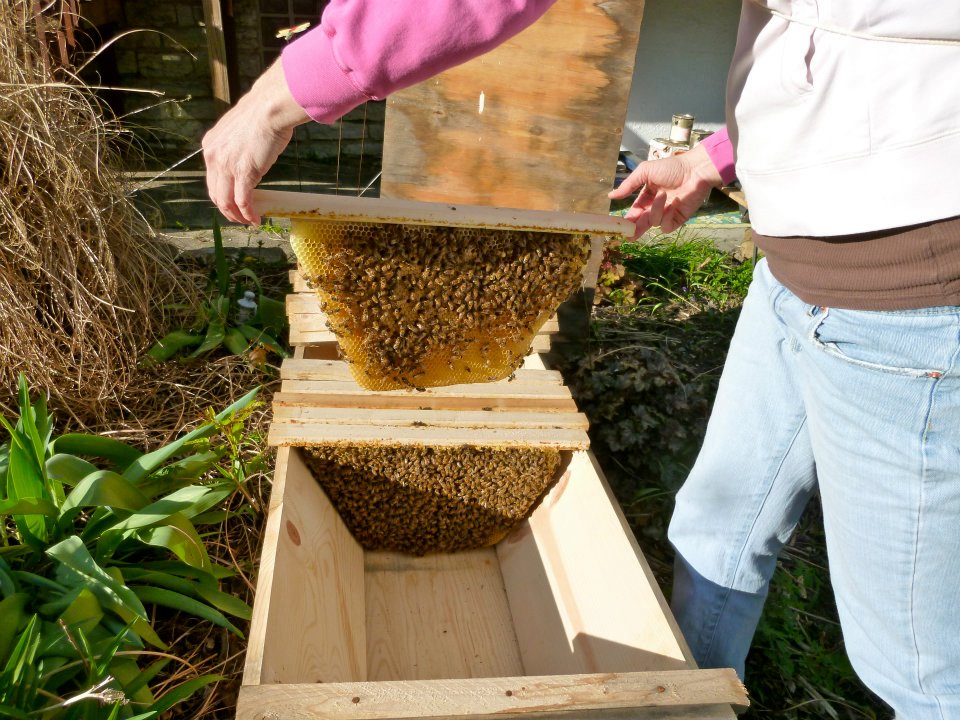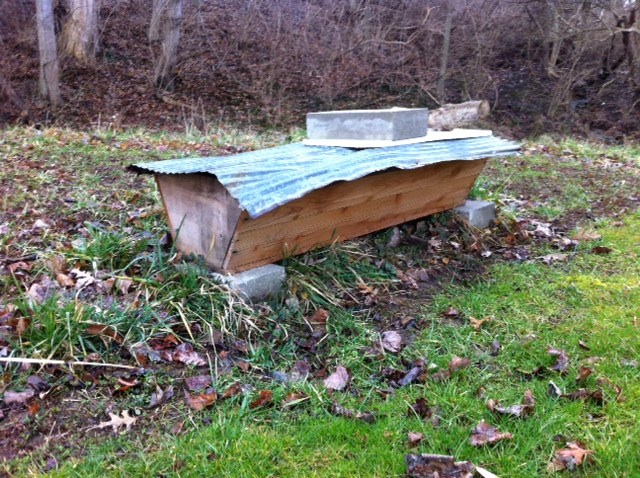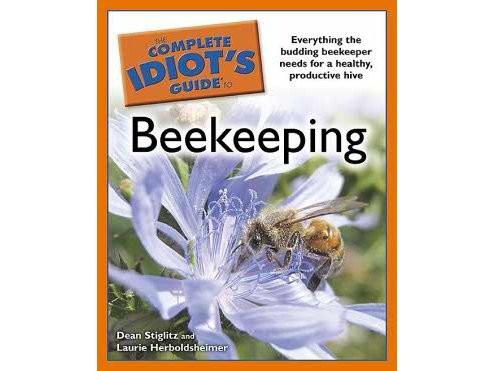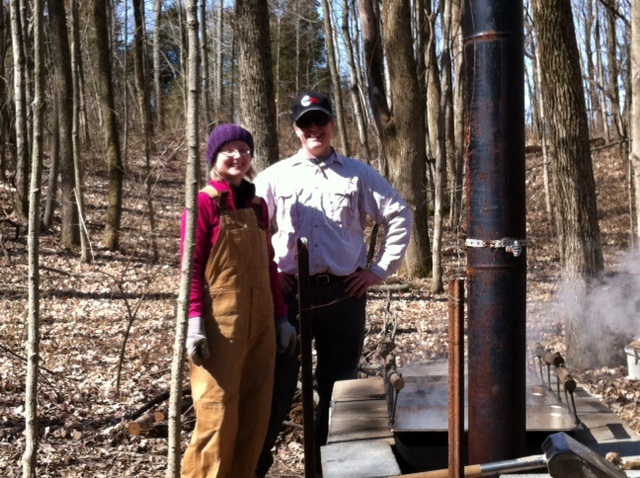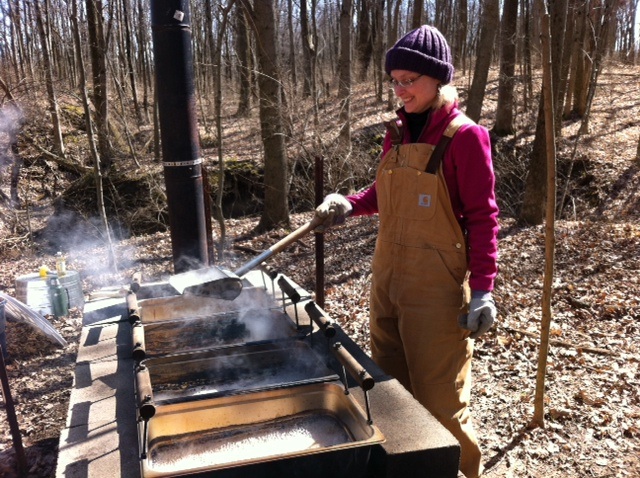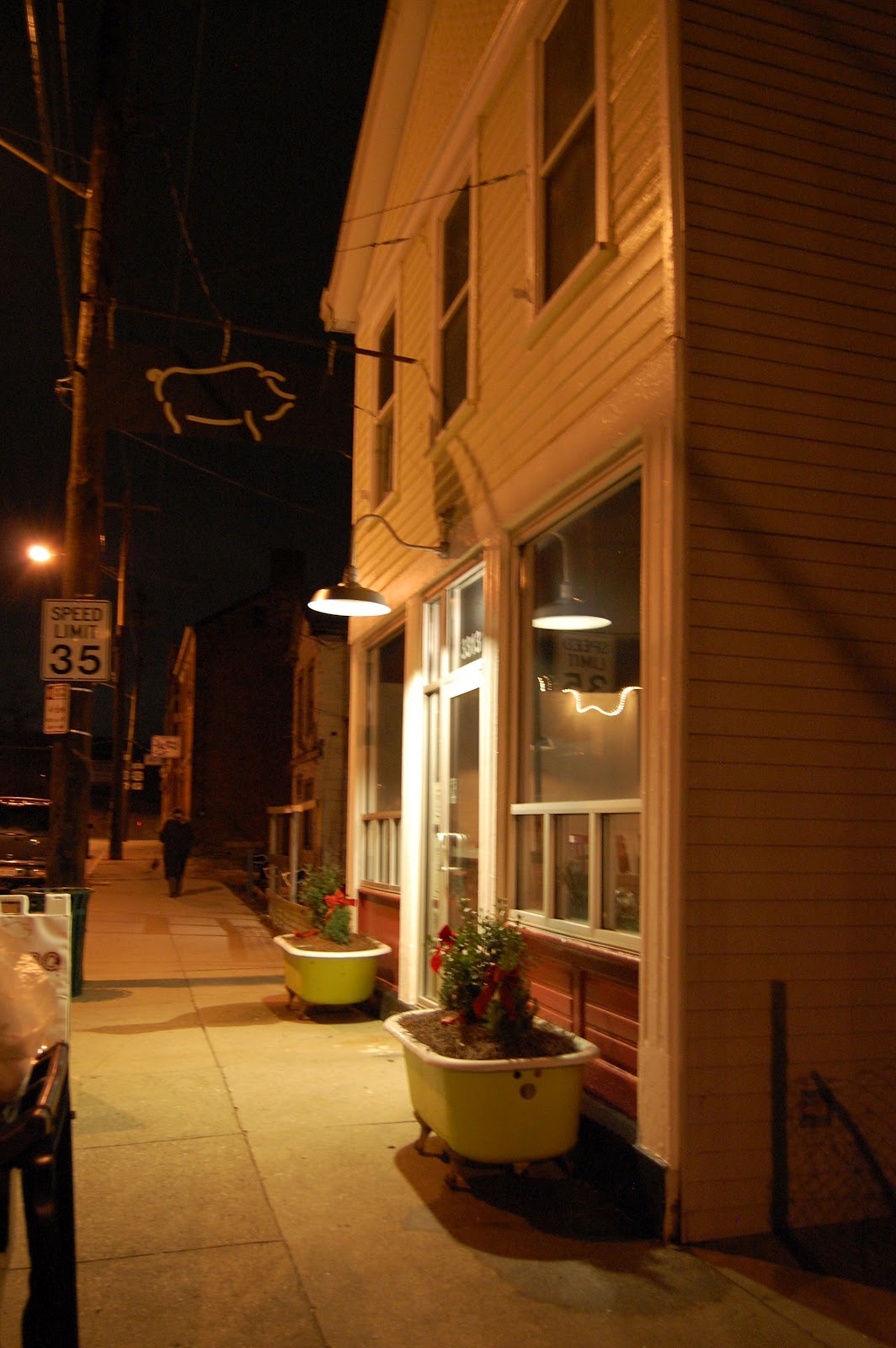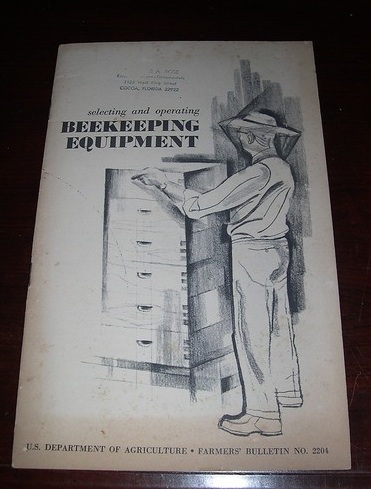
Yes, I know…I haven’t posted much about the bees lately. Why? Because Jody’s getting married soon, and today we’re hosting her first bridal shower. So I’ve been busy with that. Right now, as I type, I’m smoking 15 pounds of pork shoulder that is simply to die for. I can’t wait until we figure out a way to send aromas over the internet. Stop over at 1PM for a taste of it. You’ll also freak-out love my mother’s 3-week cole slaw, jalapeno cornbread, and Vidalia onion pie. This is not your typical bridal shower, Reader.
I built three top-bar hives yesterday, though. I swear, there was sawdust everywhere. Because I so often suggest new beekeepers try their hands at top-bar hives, and because I’ve been asked to build a few for some clients, I’m trying to determine a fair price for the hives. I think I should charge for TBHs the way bee suppliers charge for Langstroth hives (the hive in the above image is a Langstroth hive)…they charge by the piece: for the hive body, the individual top bar, the lid, the stand, etc. That makes sense, yes?
For some reason, it’s hard for me to remember to take pictures as I build. I’ll do that next time and include notes on how to construct your own TBH. I know I keep reminding myself that the bees don’t care that I’m not a precise carpenter. And if those top-bar hive novices are really into owning spectacular looking hives, then they’ll have to construct their own or find an experienced carpenter to do it for them. Mine are simple. Fortunately, the bees don’t mind; they gladly repair and improve on my inept skills.
Now, I’ve gotta go throw a handful of wet applewood chips on the fire.


